A bold plan to save the planet turns carbon dioxide into stone
This might help people hold global warming to 1.5° Celsius and limit extreme weather events
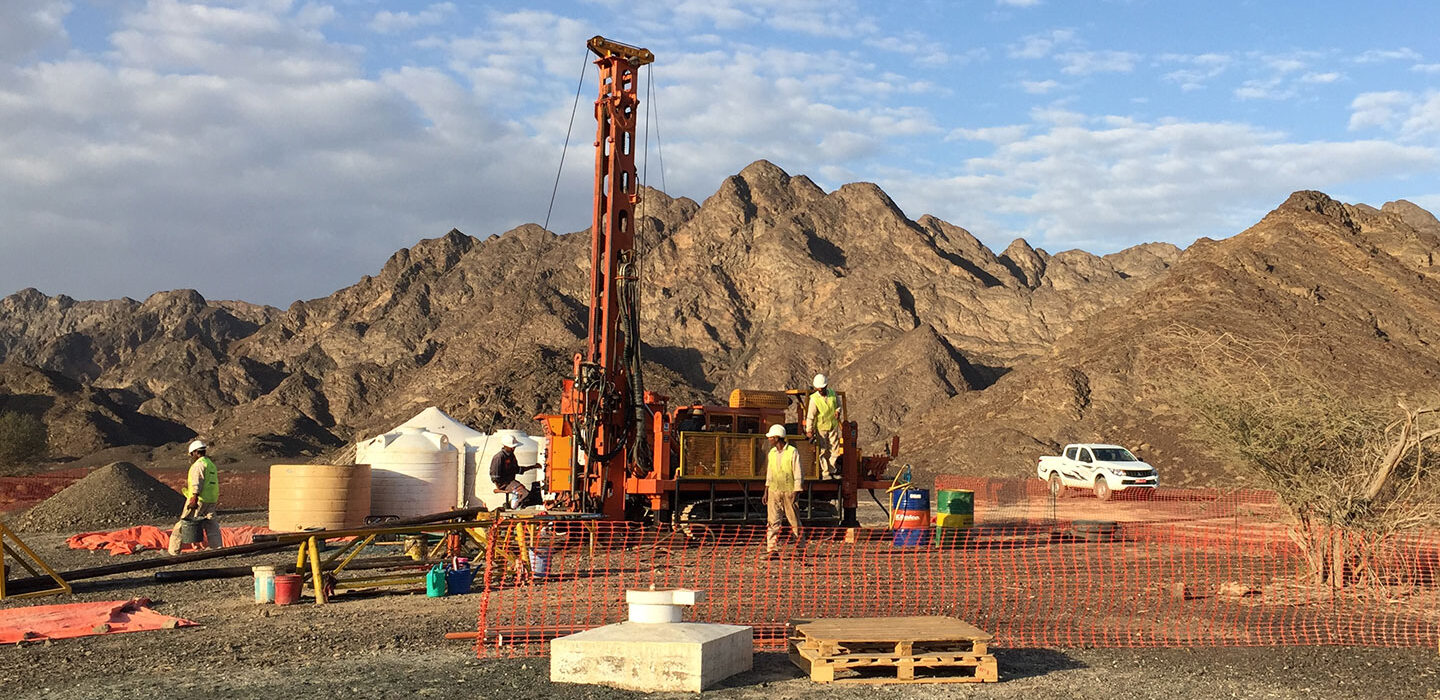
Workers drill into the ground in Wadi Lawayni, a remote valley in Oman. Millions of years ago, unusual rocks were pushed to surface here through a rare geologic upheaval. Now in contact with the air, they are reacting with carbon dioxide, locking the greenhouse gas into solid minerals.
Juerg Matter/Univ. of Southampton
By Douglas Fox
The tired, crumbling peaks of the Al Hajar Mountains are slowly decomposing like a slab of rotten meat. Subtle signs of decay are all around. Flammable hydrogen gas sometimes bubbles from groundwater. Water from natural springs is often saturated with minerals. This water leaves a carpet of frosty white crystals as it flows over the ground. Only a few types of plants can grow in such alien soils.
Here, in the desert nation of Oman, east of Saudi Arabia, the mountains comprise exotic minerals that don’t normally exist at Earth’s surface. They formed dozens of kilometers (miles) below — deeper than humans have ever delved in search of oil or gold. Now exposed to air and water on Earth’s surface, these minerals prove chemically unstable.
When rain falls, it trickles into cracks in the rock, carrying gases from the air. The water and gases react with the rock to form new, colorful minerals. These jagged veins of black, white and blue-green stone push ever deeper into the bedrock. Like slow but powerful fingers, the minerals widen the cracks, prying the rock apart.
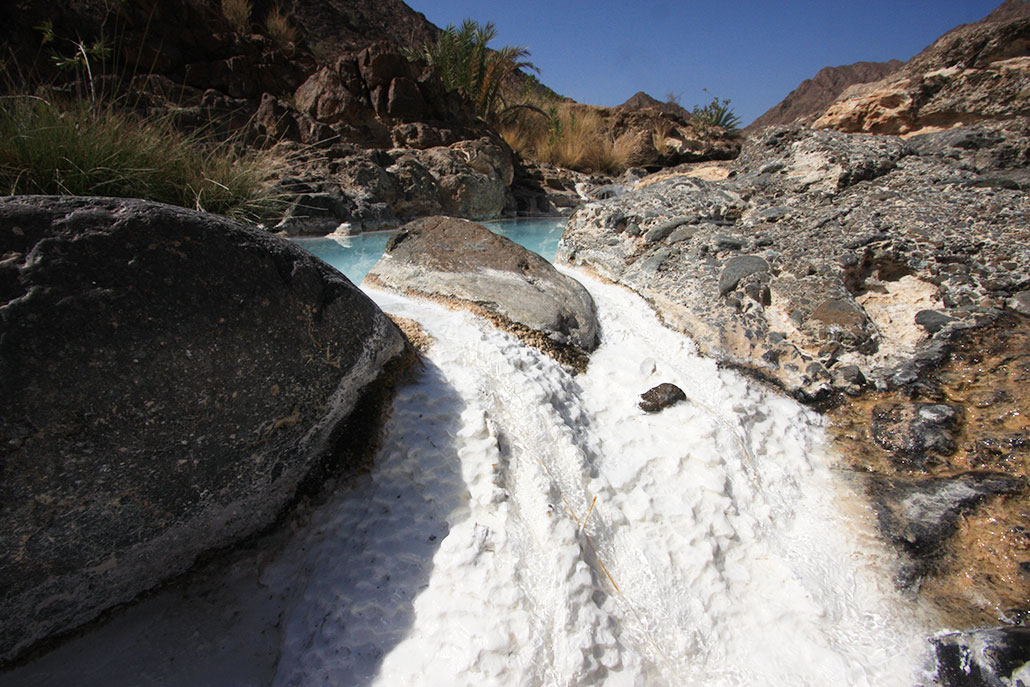
Peter Kelemen believes that these decomposing rocks could help humans solve an important problem: climate change.
Kelemen is a geologist at the Lamont-Doherty Earth Observatory in Palisades, N.Y. The white carbonate veins, he notes, formed as carbon dioxide (CO2) in rainwater latched onto magnesium and calcium atoms in the rocks. In other words, these new minerals trap the same gas that humans release when they burn fossil fuels. It’s the same greenhouse gas that is warming our planet.
These unusual rocks are spread across an area of Oman about the size of Maryland. They are naturally petrifying 50,000 to 100,000 tons of CO2 per year, Kelemen believes. That’s puny compared to the 30 billion tons of CO2 that humans release each year. But Kelemen and his colleagues believe these rocks could one day solidify up to a billion tons of CO2 per year. Other rock formations scattered around the world could capture another 10 billion to 20 billion tons of CO2 each year. ”You’re looking at something that could potentially have an impact on the human global carbon budget,” he told me one afternoon in Oman.
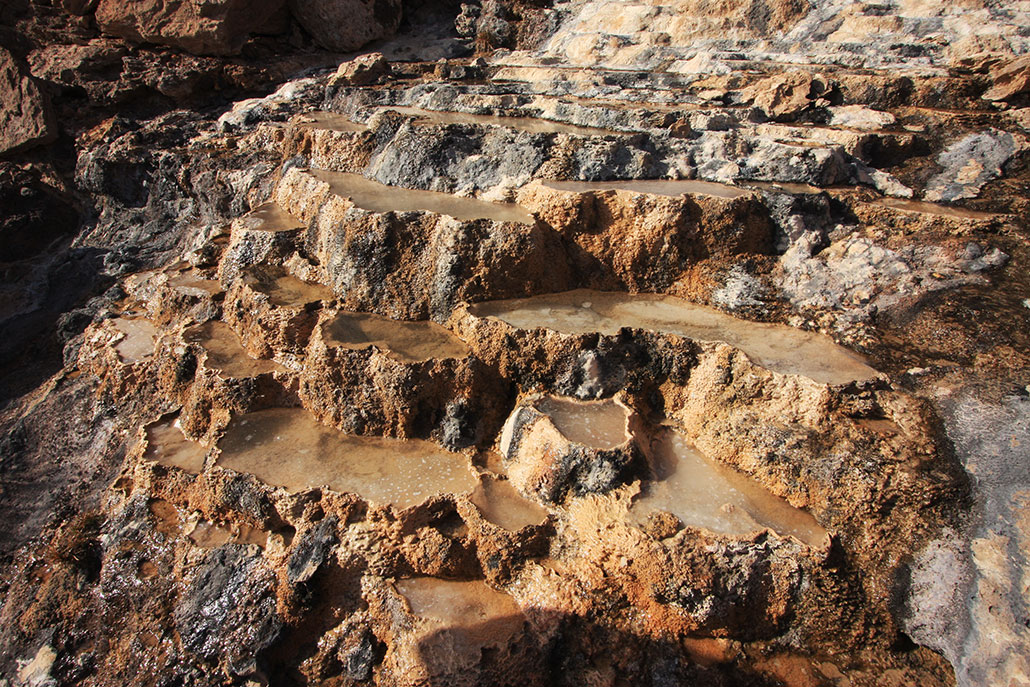
Kelemen and his collaborator, Juerg Matter, have been working on this idea for nearly 20 years. Matter is a geochemist at the University of Southampton in England. When I visited them in Oman in 2018, their team was busy drilling several holes into the rock. They planned to pull up stone from as deep as 400 meters (1,300 feet) underground. Those cores would help them better understand a natural process that they hope to speed up.
Negative emissions
Removing CO2 from the air once seemed outlandish. In the last 20 years, however, it has gained momentum as the urgency of climate change has become clearer.
Many scientists now believe people will not reduce releases of greenhouse gases quickly enough to prevent Earth from warming more than 1.5 degrees Celsius (2.7 degrees Fahrenheit). It is thought that this warming limit would avert the most dangerous effects of climate change. Those effects include runaway sea level rise, the loss of the Amazon rainforest and frequent catastrophic storms.
Scientists are now suggesting that people resort to a strategy called “negative emissions.” These would include vast projects to suck billions of tons of CO2 from the air each year. They would need to use many tactics, such as replanting forests. Or fertilizing the ocean to spur the growth of photosynthetic plankton. The forests and plankton would naturally pull CO2 out of the air.
Several companies are also building “direct air capture” machines to pull CO2 from the air. The captured gas could then be pumped underground.
Energy companies have pumped small amounts of CO2 into empty oil and gas reservoirs since the 1980s. There, the gas is trapped between layers of sedimentary rocks, such as sandstone. But if the gas leaks back out, it could cause problems, warns Gregory Nemet. He’s an energy scientist at the University of Wisconsin–Madison. “It doesn’t take a lot,” he says. “If it’s one or two percent leakage, that really puts a hole in our plans to stabilize the climate.”
But different rocks, like those in Oman, could more permanently trap CO2. They contain high levels of calcium and magnesium silicates. In these minerals, calcium and magnesium atoms are bound to clusters of oxygen and silicon atoms, called silica. These minerals, uncommon at Earth’s surface, are plentiful in rocks very deep below ground. Scientists had suspected these minerals would react with CO2 and lock it into carbonate minerals. This idea lured Matter to get involved. He wanted to test it.
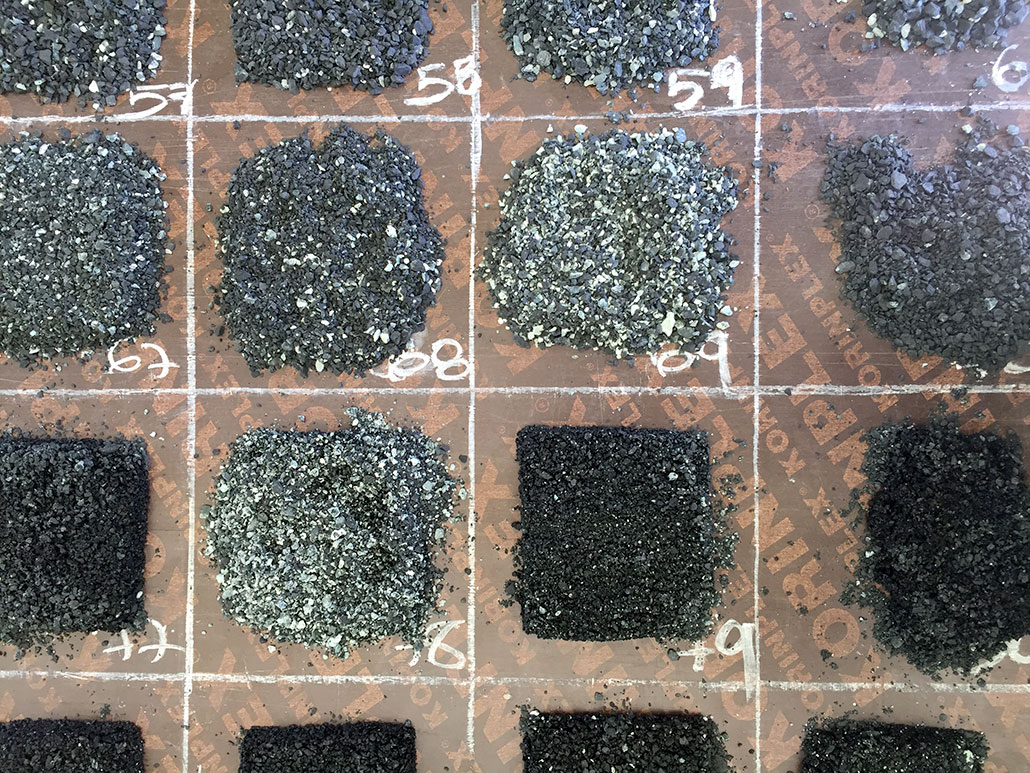
Down the rabbit hole
Matter had just gotten his PhD when he took a job at Lamont-Doherty back in 2001. The campus sits in a forest near New York City. The buildings stand above cliffs that drop 100 meters (325 feet) into the Hudson River. Those chocolatey brown cliffs are made of stone known as basalt. It formed from lavas that erupted millions of years ago from deep inside Earth.
Basalts contain calcium and magnesium silicates. David Goldberg, the geophysicist who hired Matter, wanted him to try injecting CO2 into them.
”Everybody thought I’m crazy, and even stupid,” for trying this, recalls Matter. Other scientists had done lab experiments. Their data suggested carbonate minerals would take hundreds of years to form. That would be far too slow to attack today’s climate-change threat.
But in 2004, Matter and Goldberg tried anyway. They injected water 230 meters (750 feet) down a well drilled into the basalt. That water contained a few kilograms (maybe 5 pounds) of CO2.

Educators and Parents, Sign Up for The Cheat Sheet
Weekly updates to help you use Science News Explores in the learning environment
Thank you for signing up!
There was a problem signing you up.
When Matter pumped the water back out a week later, the CO2 had vanished. This gas forms a weak acid in water. The acid dissolved some of the calcium and magnesium silicates in the rocks. They reacted with the gas to form carbonates. And this was happening 300 to 3,000 times more quickly than in lab tests. The team published its findings back in 2007.
“Thinking back, it was quite high risk what we did,” says Matter. There was a big chance that it wouldn’t work. “We just believed in it,” he says. And, he adds, “We were really just lucky.”
Matter and several other scientists then went looking for other places to turn CO2 into stone — and on a much bigger scale. In 2012, they got their chance.
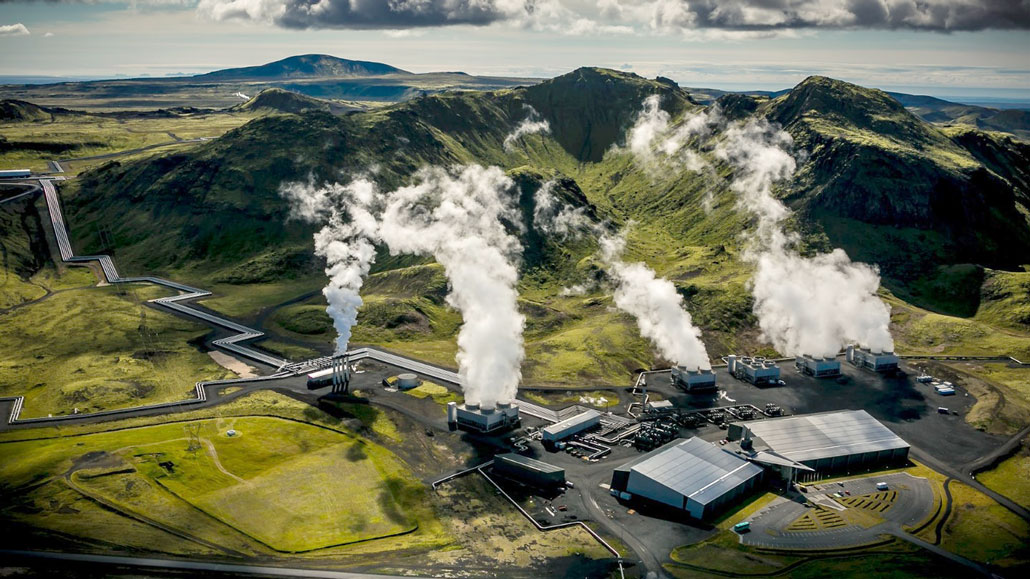
10,000 tons per year
Iceland is an island nation in the north Atlantic Ocean. Reykjavik Energy, there, ran a geothermal power plant near one of the country’s many volcanoes. The company wanted to dispose of CO2. Its plant generated electricity using hot water gushing up from underground. Volcanoes often spew CO2. As the water emerged from below ground, it too released this gas into the air.
But there was an obvious solution. Iceland is made almost entirely of basalt. Injecting CO2 into that basalt should lock it away.
In 2012, workers drilled a hole in a grassy field near the power plant and injected water 400 meters (1,300 feet) into the basalt below. This water held six times as much CO2 as seltzer water does. To prevent it from fizzing violently as the gas escaped, the water had to be kept under high pressure. Over several weeks, the team injected 71 metric tons (78 U.S. tons) of CO2 into the rock.
Meanwhile, Sandra Snæbjörnsdóttir (SNY-byorns-DOT-er) pumped water from another nearby hole. She’s a geologist who was working on this project, known as Carbfix. She found that the CO2 was disappearing from the injected water as it seeped through the rocks. “It happened actually faster than we dared to hope,” she says.
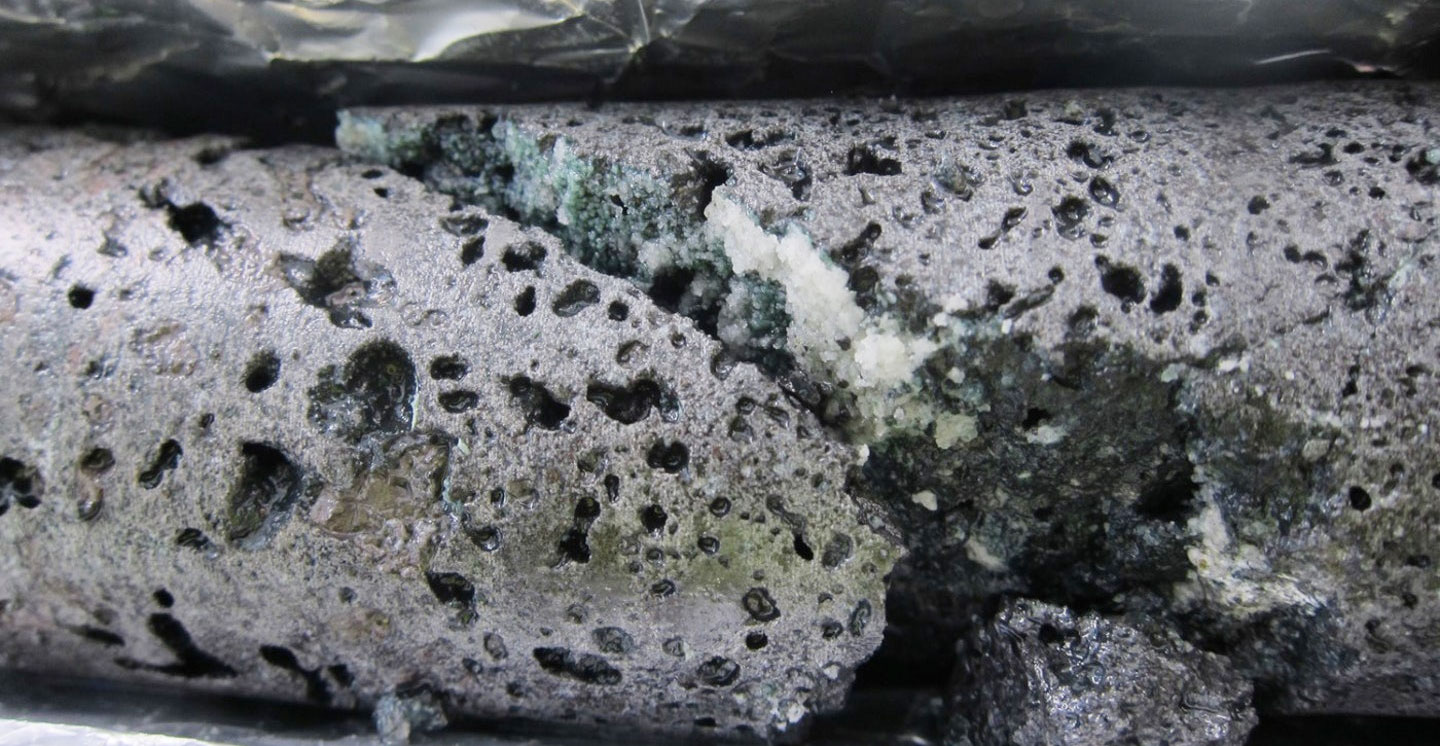
Over 95 percent of the CO2 formed minerals — solid rock — within two years. The team drilled a new hole and retrieved stone cores from near the injection site. The cylinders of gray-black basalt were splotched with white. Those splotches were the carbonate minerals formed by the injected CO2. These results appeared in Science in 2016.
The project is now petrifying 10,000 tons of CO2 per year. And Carbfix has become a separate company, with plans to expand its operations.
“You can actually stuff quite a lot of CO2 into these rocks,” says Snæbjörnsdóttir, who now works for the new company. She estimates that a cubic meter of basalt (a block the size of a dishwasher) can absorb more than 100 kilograms (220 pounds) of CO2. Basaltic rock also sits beneath most of the world’s seafloors. Not all of that rock is suitable for petrifying CO2. But some of it seems to be. Snæbjörnsdóttir predicts that Carbfix will eventually try injecting CO2 into these oceanic basalts off the coast of Iceland.
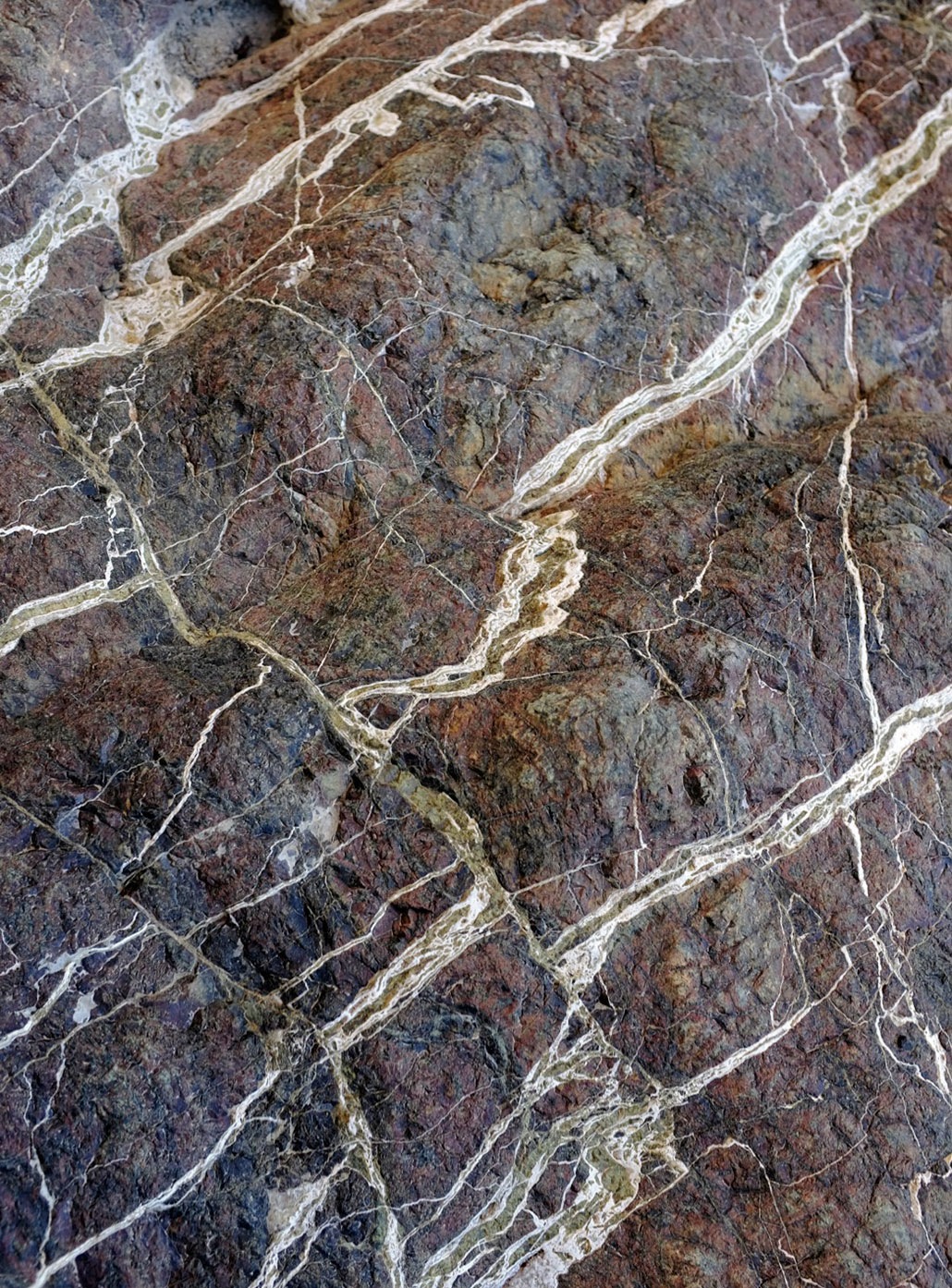
Matter oversaw the initial Carbfix experiments. But even before those first injections, he was already looking for more places to solidify CO2.
In 2007, he and Kelemen started looking at the rocks in Oman. These rocks come from the mantle. That’s the middle layer of our planet. Humans have never directly seen it. The mantle starts about 10 kilometers (6 miles) below the seafloor and reaches 2,900 kilometers (1,800 miles) into the Earth. The Oman rocks were a tiny fragment of mantle that had been shoved up to the surface. It happened millions of years ago during a rare geologic upheaval.
The mantle is the source of lava and basalts. Its rocks contain even higher levels of calcium and magnesium silicates than do basalts. Because of this, Matter and Kelemen believed that the Oman rocks might be able to trap more CO2 per cubic meter than the rocks in Iceland.
Mantle rocks on the surface of the Al Hajar Mountains are crisscrossed with white carbonate veins. Matter and Kelemen used radiocarbon dating to show that some of those veins were less than 5,000 years old. This suggested these rocks hadn’t just absorbed CO2 millions of years ago — they were doing so right now. Matter and Kelemen published those findings in 2008.
The two scientists still needed to learn more about what was happening below the surface. So in 2017 and 2018, they and a large team of researchers drilled several holes in Oman to retrieve stone cores. I spent a week with them in January 2018 as they drilled in a remote valley, Wadi Lawayni (WAH-dee Lah-WAY-nee).
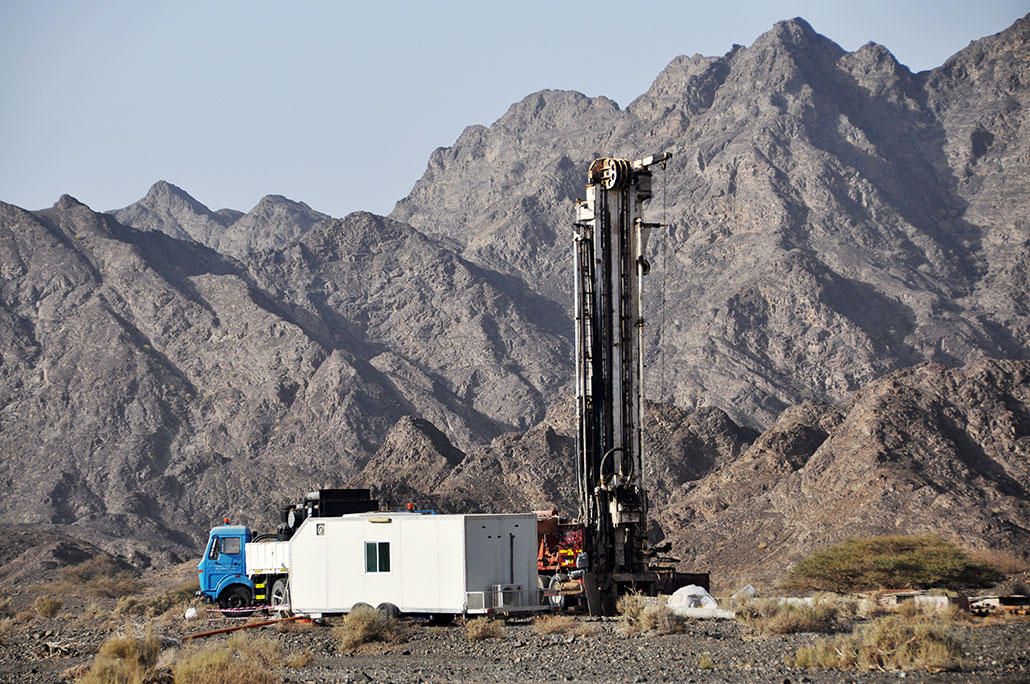
Colored veins and bubbling rock
On a late afternoon, several camels wandered past, chewing on scraggly bushes. A diesel engine roared. And a metal drill shaft, driven by that engine, spun several thousand times per second as it cut into the rocks beneath our feet.
Now and then, workers in hard hats idled the motor to a low growl. Then they raised the drill from the hole, detached a metal pipe and slid out three meters (9.8 feet) of cored rock.
The cylinders of stone were as thick as a baseball bat. After laying them out on tables, Kelemen, Matter and several other scientists examined them.
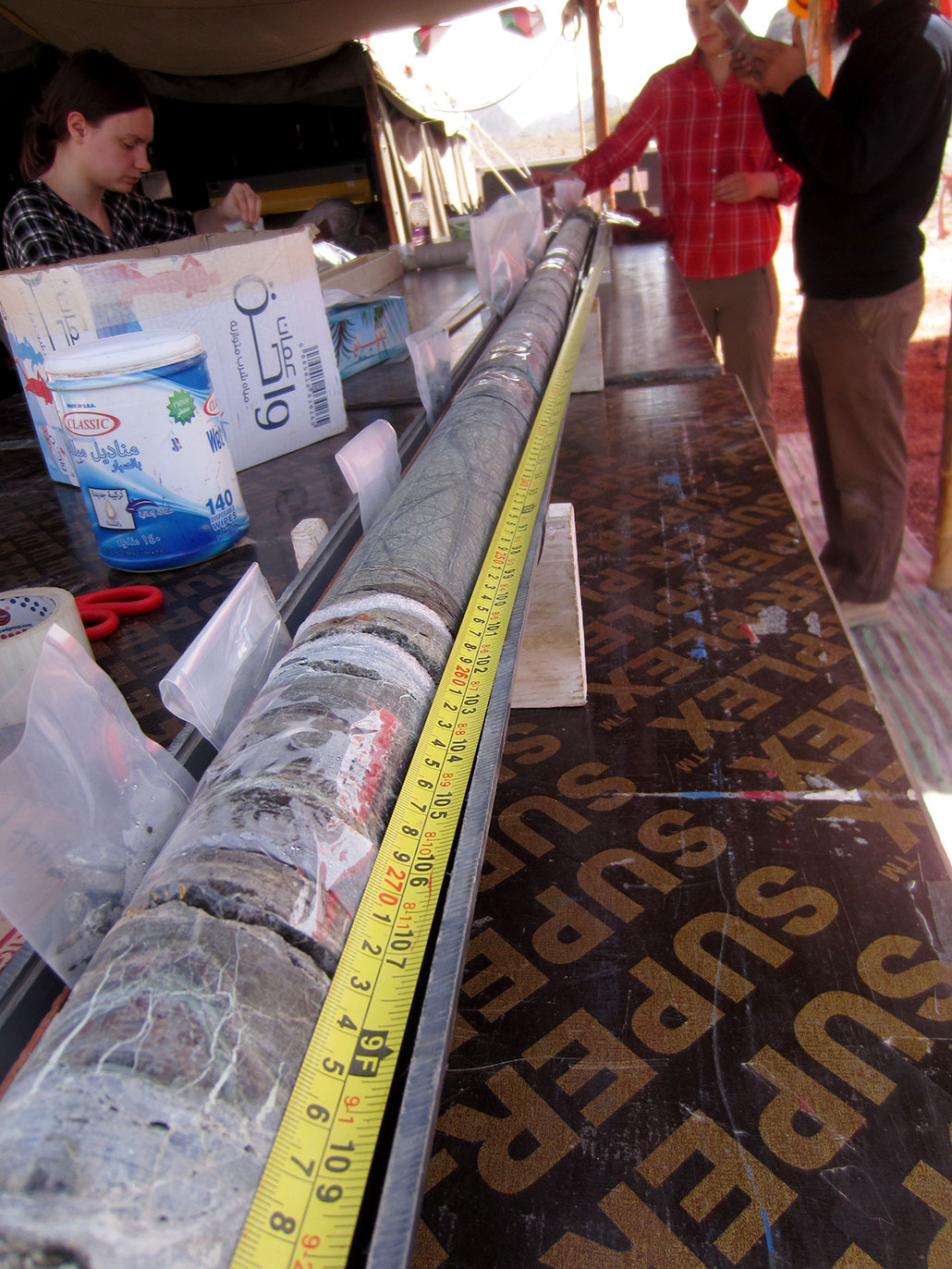
The gray stone was crisscrossed with white, black, orange-yellow and blue-green minerals. These veins marked where water and gases, seeping through cracks, had reacted with the stone.
Oxygen reacted with iron in the rock — literally “rusting” it — to create yellow and orange veins. Black, blue and green veins often were a mineral called serpentine. It forms when water reacts with silicates. And the white veins were usually carbonate minerals — although not always. I watched as Elisabetta Mariani ran a quick test on a vein to identify the mineral.
Mariani is a geologist at the University of Liverpool in England. Using a lighter, she held a flame against the vein for several seconds. Then, with a plastic bottle in hand, she squeezed several drops of acid onto it. The heated part of the vein fizzed like seltzer water for several seconds. As it reacted with the acid, the rock was releasing tiny bubbles of CO2.
“This is magnesite,” she said — magnesium carbonate.
These carbonate veins were plentiful in the top 15 meters (50 feet) of core. They were often as thick as a finger. Farther down, they thinned and became less frequent. Below 100 meters (330 feet), there were none.
This confirmed what Matter had long suspected. “All of the CO2 is mineralized in the very shallow part,” he says. Once rainwater has seeped in, it may spend many years underground. But all of its CO2 is consumed right at the beginning.
Matter and Kelemen now think the rate of carbonate formation could be boosted — and by a lot. Someday, they envision CO2 being pressurized into water at 125 times rainwater’s natural concentration (about 6 times that of seltzer water). This mix would then be pumped three kilometers (almost two miles) underground. Rocks there are close to 100 °C (212 °F). The high heat and pressure would speed up the chemical reactions that turn CO2 to stone.
This is many years away.
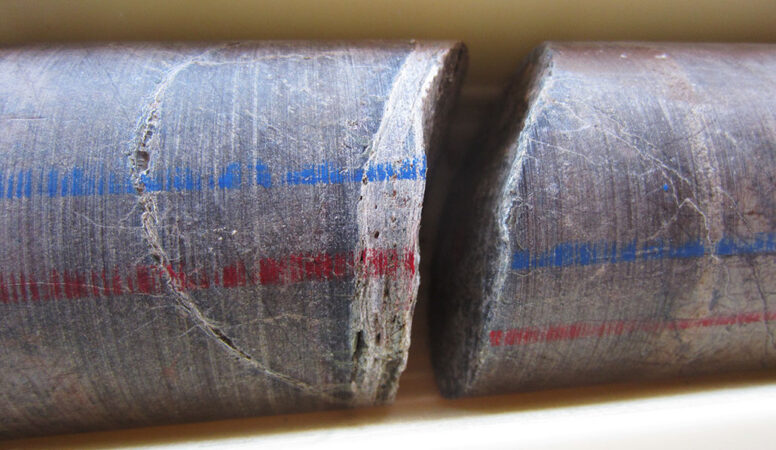
Omani tests are underway
But the first baby steps are starting. Late in 2020, an Omani company named 44.01 was set up. (It is named after the average weight of a molecule of CO2.) The company’s goal is to trap CO2 in mantle rocks in Oman.
”We are aiming for one gigaton,” said Talal Hasan, shortly after 44.01 was formed. He is the company’s founder. By “gigaton,” he means a billion tons per year.
The first field test was, of course, quite small. Last September, workers injected about 240 kilograms (530 pounds) of CO2 into one of the boreholes in Wadi Lawayni. A month later, Matter pulled some water samples out of another hole a few meters away.
Matter is still analyzing that water. But he hopes to find evidence that the mix of CO2 and water is reacting with the rock. “This test is just to demonstrate on a field scale that the reaction is fast enough,” he says. Later, larger tests will see if the newly forming carbonates are prying the rock apart, as expected. Both Matter and Kelemen are giving the company scientific advice.
But the long-term success of their vision will depend on more than just scientific results. It will also depend on the decisions of governments around the world.
The cost of turning CO2 to stone
Companies like 44.01 and Carbfix can only turn CO2 to stone if someone will pay them to do it.
Before CO2 can be injected underground, it first has to be captured from the air. And the tech to capture CO2 is not cheap. Still, Nemet predicts that the cost of direct air capture will come down over time (as it has for other technologies, such as wind power).
Even if someone is willing to pay for it, turning CO2 into stone will require a lot of work. Companies like Carbfix and 44.01 might take 20 years to work their way up to injecting gigatons of CO2 per year. And the operations needed to do that will be truly massive.
Kelemen estimates that trapping a billion tons of CO2 per year in Oman might require 5,000 injection wells. Those wells would need to pump a combined 23 cubic kilometers of water into the ground each year. That’s equal to about one quarter the annual flow of the Missouri River. Because Oman is a desert nation, this water would have to come from the ocean.
Gathering a billion tons of CO2 per year from the air would require thousands of machines, each about the size of a truck. Together, they could devour up to 1.3 trillion kilowatt hours of electricity per year. That’s three times the amount of electricity consumed by the entire state of Texas. To avoid gushing more CO2 into the air, this electricity would need to come from a renewable source — such as wind or solar — not fossil fuels.
Fortunately, Oman gets plenty of sunshine. Some 600 square kilometers (230 square miles) of solar collectors could supply the electricity needed. That’s about one five-hundredth of Oman’s land area. “It’s not insurmountable,” says Ajay Gambhir. “But it’s a bit of a challenge,” notes this energy economist. He works at Imperial College London in England.
By 2050, people would need to remove up to 20 billion tons of CO2 from the skies each year. That would require 20 of these massive operations — or hundreds of smaller ones — working across the globe.
Gambhir views these technologies as an important “insurance policy.” Perfecting them will take years. But if we get to 2040 and CO2 emissions are still high, then it will be too late at that point to start working on them, he says. “Doing it now is the right thing to do.”







